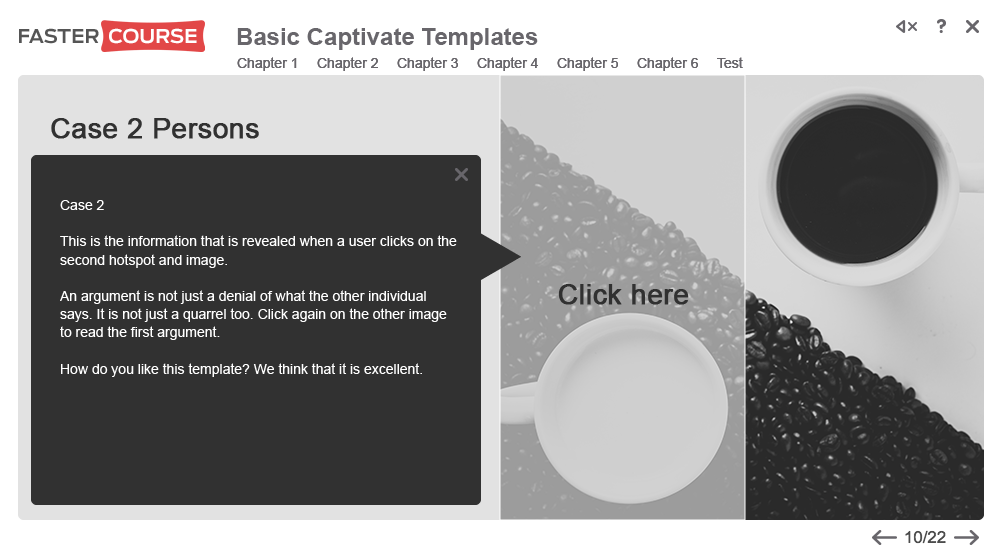

- Creating new template in adobe captivate 2017 how to#
- Creating new template in adobe captivate 2017 windows#
You can save all of the elements of a shape’s style – from format, to fill color, line color and font size. Step 6: Create a new style, based on the customization that you made to the shape. Then change the state of the object to Down, and alter the color of the down state to meet your needs. (Default, Hover, & Down) Select the Hover state, and then change the color formatting of the shape in it’s hover state. Captivate will automatically add three states to buttons on master slides. At the top of the property inspector you will find an object state drop down menu. You can also add text at this point by double clicking inside the shape, and then typing your label. Go back to the style tab in the property inspector and select the fill color you prefer for the default appearance of the shape.

Step 5: Modify the style of the shape in each state. Ensure that the action is set to go to next slide for the ‘Next’ button. From the actions tab, select the ‘On Success’ drop down. You’ll see a new ‘Actions’ tab appear in the property inspector. In the property inspector, check the ‘Use as button box.’ This will convert the shape into a multi-state button. Step 4: Format your shape & Make it a button. Now select a shape that you find appropriate for a next button. The best way to make a button in Captivate is to use a smart shape, and enable the ‘use as button feature.’ To do so, select the shape tool from the large button bar. You will be able to add elements to the slide that will appear on the top of any slide that uses the new master as a template. Step 3: Adding universal Navigation Controls In the property inspector on the right, change the name of the newly created slide to ‘Navigation.’ Right click the blank slide, and select duplicate slide. Select the blank slide from the list of master slides on the left. Select Window: Master Slide View to move to a master slide editing mode. In this case we are going to create our own navigation, so you’ll want to change that setting to Automatic advancement. By default, Captivate will add an interactive click box to allow mouse clicks to move the project forward one slide at a time.

Once you have confirmed the file to import, Captivate will open an import preferences dialog like the one below. It can be either a *.pptx file, or the older *.ppt format. You’ll be asked to select a PowerPoint file. Just Click on the large ‘From PowerPoint” button on the Captivate launch screen.
Creating new template in adobe captivate 2017 how to#
Along the way I provide some time saving shortcuts, including how to create an object style to use across multiple buttons, and how to use a Master Slide to add navigation controls to many slides at the same time. In the below video I walk you through the entire process of adding custom navigation buttons to a basic PowerPoint module. But what if you don’t want to use a playbar, or you have reasons for adjusting the navigation? Captivate makes that really simple too. The easiest way would simply be to leave the PowerPoint import settings alone, and let your learners click through the deck.

Creating new template in adobe captivate 2017 windows#
Captivate can import PowerPoint files on Windows machines, and Captivate 2017 makes it easy to create multi-state buttons to handle the course navigation. Often the basis for such courses is a Microsoft PowerPoint file. While I generally don’t recommend it, very often eLearning developers are called upon to create simple course modules very, very quickly.


 0 kommentar(er)
0 kommentar(er)
